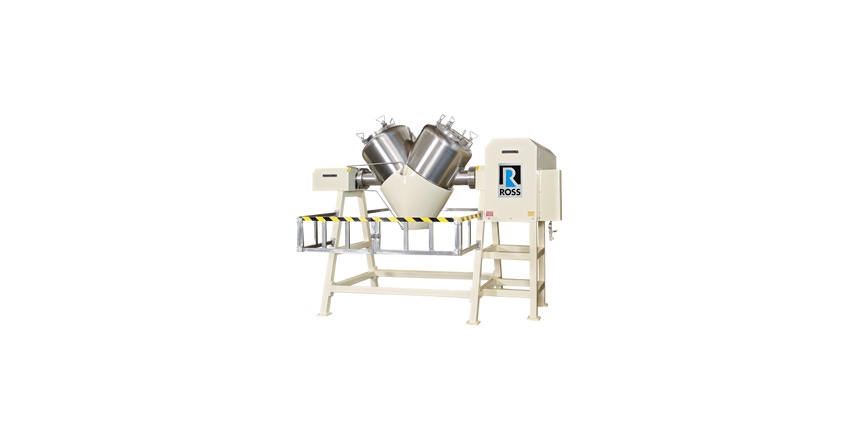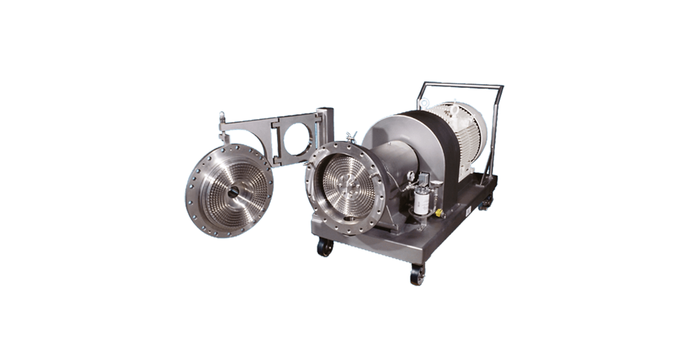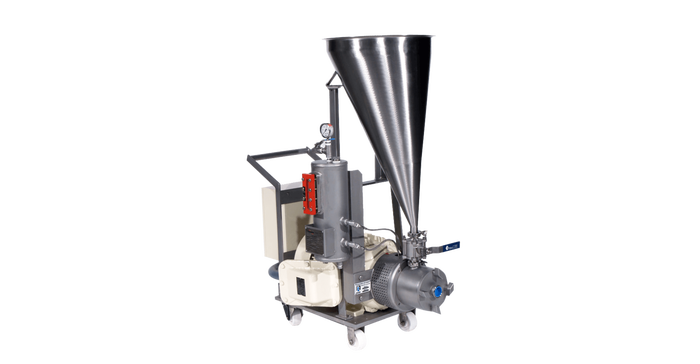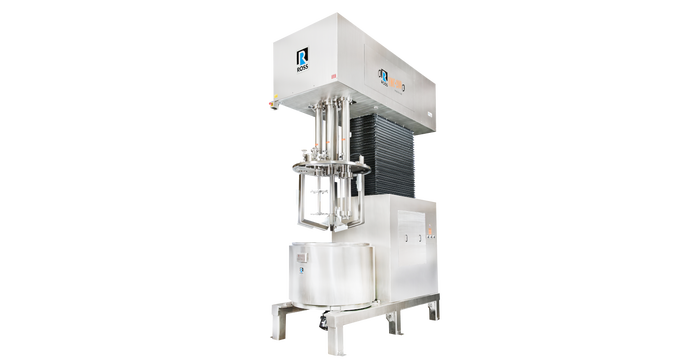Optimizing 3D Printing: High-Quality Feedstock and Advanced Mixing Solutions
Efficient mixing can sharpen competitive advantage and help companies respond creatively to changing market trends.
January 24, 2024

The 3D printing industry has revolutionized the way we design and manufacture a wide range of products, redefining the landscape of product design and manufacturing across the process industries. From the precision required for aerospace components to the intricacies of dental devices, and even innovations in battery manufacturing and housing structures, 3D printing has proven to be a versatile and dynamic force.
The growing accessibility and number of use cases for 3D printing or additive manufacturing highlights the departure from conventional manufacturing methodologies, where the focus is on subtracting or removing material, like in the traditional processes of CNC machining (drilling, boring, milling, reaming), laser cutting, and water jet cutting. Building up parts by incremental material addition, 3D printing technology has significantly matured to become a practical method for creating highly intricate designs, complex structures and functionalities once deemed too challenging or impossible.
Feedstock: The Backbone of Additive Manufacturing
The raw materials utilized in the production of 3D printed products, referred to as feedstock, are comprised from a wide variety of materials such as plastics, elastomers, composites, metals, alloys, or ceramics. These raw materials are transformed into filaments, wires, rods, pellets, liquids, slurries, pastes, gels, and powders, that are then used in creating 3D printed products.
Composites could be a plastic or elastomer that is reinforced with glass fiber, carbon fiber/nanotubes, Kevlar, graphite, graphene, metal, ceramic powders – basically any fillers or additives that increase strength, conductivity, thermal stability, rigidity/flexibility, shock resistance and other desired properties.
Metal additive manufacturing utilizes stainless steels, tool steels, refractory metals (molybdenum, niobium, tantalum, tungsten, rhenium), precious metal alloys (platinum, rhodium, iridium, palladium, silver, gold), titanium alloys, aluminum, and specialty alloys (Inconel, cobalt chrome).
Technical ceramics are materials that can endure high temperatures without cracking or warping. Examples include aluminum oxide (alumina), zirconium oxide (zirconia), silica, aluminum nitride, boron carbide, silicon carbide, and silicon nitride. Ceramic materials used in additive manufacturing also include sand, concrete, and clay. Bioceramics, a specialized subclass known for excellent biocompatibility and bioactivity, play a pivotal role in applications like dental implants, bone grafts, and scaffolds. These materials actively contribute to the body's repair processes. Bioactive glasses, hydroxyapatite, and tricalcium phosphate fall under this category, further expanding the scope of possibilities in additive manufacturing.
3D Printing Technologies
Various 3D printing methods cater to specific needs and performance criteria. Fused Deposition Modeling (FDM) stands out as a common and accessible technique, employing heated nozzles to layer thermoplastic filament material onto a build platform, creating precise designs by solidifying the material as it cools. Stereolithography (SLA) utilizes UV light to harden liquid photopolymer resin layer by layer, crafting detailed models. Selective Laser Sintering (SLS) fuses powdered materials, such as polymers, metals, or ceramics, using a high-powered laser to construct objects while utilizing unused powder for support. Digital Light Processing (DLP) uses a digital projector to swiftly solidify entire layers of resin, enhancing printing speed. Binder Jetting employs liquid binding agents to bond powder layers together, creating objects that are strengthened after excess powder removal and curing. Material Jetting, similar to inkjet printing, deposits droplets of photopolymer materials, UV-curing them layer by layer, resulting in intricate and accurate objects. These methods and feedstocks, each unique in process and application, offer versatile solutions in the realm of 3D printing.
As printer and material technologies continue to evolve, it's not hard to see how the inherent advantages of additive manufacturing justify its popularity and growing number of uses. Just to name a few of the benefits of 3D printing:
• Parts can be redesigned to be lighter yet stronger or more chemical resistant.
• Rapid prototyping
• Ability to make complex shapes and designs in particular materials never before possible with traditional manufacturing processes
• Improved sustainability (automated production on demand, less waste, reduced transportation costs, use of recyclable, bioderived, and other innovative materials, etc.)
• Cost-effective for small productions runs and applications
The Importance of Mixing
To maximize these benefits and consistently achieve high-quality 3D printed products, the starting feedstock must also be of consistently high quality. Since most feedstock are mixtures and not single-component materials, mixing and blending technologies play a crucial role in additive manufacturing. Strength, texture, appearance, conductivity, durability, and other properties in the finished product are directly impacted by the mixing operation. Selecting the right mixing equipment -- whether for powder, liquid, paste, or semi-solid feedstock – is therefore the first step to obtaining formulation accuracy and batch-to-batch repeatability. Proper mixing reveals the full functionality of additives and fillers, preserves sensitive ingredients, prevents contamination, and conserves energy consumption. Overly long mixing times, low yield, frequent reworks, labor-intense cleaning, and maintenance procedures are some signs that a mixing process could be improved or replaced.
As 3D printing becomes more widespread, it is essential for process engineers and manufacturers to be continually updated on new mixing technologies and design improvements. Many of today’s mixing technologies overlap in use and function such that certain applications can be successfully produced by two or more types of mixing systems. In these situations, economics rule out the more costly initial investments, but difference in efficiencies must also be considered.
Mixing Solutions for 3D Printing Feedstock
Tumble Blenders
The tumble blender is characterized by a rotating vessel that usually comes in a double cone or V-shaped configuration and is ideal for handling metal and alloy powders used in 3D printing, particularly those with extremely high bulk density. Tumble blenders ensure low-impact mixing, making them suitable for abrasive solids and friable ingredients. The vessel turns at a speed of 5-25 revolutions per minute and utilizes diffusion as the main mechanism for mixing. Batch materials cascade down, distributing particles over a freshly exposed surface as the vessel rotates on a horizontal axis.
Proper blending is essential to producing high-purity, chemically homogeneous, spherical powders within a target particle size distribution, having excellent flow properties and high packing density. One main advantage of the double cone and V cone vessel is that their geometry allows for complete discharge of the blended material which translates to high yield, lower risk of contamination and easy cleaning.
Tumble blenders can be designed to operate under vacuum and/or positive internal pressure, making them suitable for specific requirements such as low oxygen content. The vessel can also have a jacket for heating/cooling powders during the blending cycle.
Planetary Mixers
Planetary mixers excel in handling viscous formulations up to 8 million cP. Equipped with two identical blades rotating on their own axes while orbiting on a common axis, the blades travel along the periphery of the vessel while continuously removing materials from the vessel wall and transporting them to the interior. Double planetary mixers can handle 3D printer feedstock and intermediate materials that resemble a thick paste, putty, or dough in terms of consistency. Because the blades run at relatively low speeds, this type of mixer can blend shear-sensitive materials and can tolerate abrasive applications, such as metal or ceramic dispersions in a polymer, wax, or resin binding agent.
_with_High_Viscosity_%E2%80%9CHV%E2%80%9D_Blades.png?width=700&auto=webp&quality=80&disable=upscale)
ROSS double planetary mixer with high-viscosity blades
High-Shear Mixers
High-shear mixers (HSM) are designed for low-viscosity applications that require high levels of shear forces and intense turbulence to properly disperse solids into liquid, break down agglomerated particles, emulsify immiscible liquids, or homogenize materials. High shear mixers can be used in 3D printing applications such as dispersion of pigments, additives, and fillers into resins or waxes; polymer suspensions, ceramic slurries; lubricants (like silicone emulsions and Teflon suspensions); and binder solutions.
Available in batch (vertical) or inline (horizontal) configurations, high-shear mixers are comprised of a rotor that turns at high speed within a stationary stator. As the blades rotate, materials are continuously drawn into one end of the mixing head and expelled at high velocity through the openings of the stator. The hydraulic shear generated promotes fast mixing, breaks down agglomerates, and reduces the size of droplets. Rotor tip speeds between 3,000 and 4,000 ft/min are typical.

ROSS inline ultra high-shear mixer
High-Speed Powder Dispersion into Liquid
Different powders behave differently when added to liquid, and some require more coaxing to dissolve, hydrate, or disperse completely than others. Powders that are easier to mix only need the gentle agitation provided by low-speed propeller, turbine, or paddle agitators.
More challenging powders benefit from higher speed rotor/stator devices, which generate a powerful vortex into which the powders are added for faster wet-out. A key development in rotor/stator design is SLIM (Solids/Liquid Injection Manifold) technology, a high-speed powder induction system specially designed to create negative pressure (vacuum) behind the rotor, which can be used as the motive force to inject powdered (or liquid) ingredients directly into the high shear zone.
Feedstock or intermediates thickened with fumed silica, carboxymethyl cellulose, hydroxyethyl cellulose, carbomer often benefit from powder induction via a SLIM system. Processing advantages include:
• Simple and straightforward operation. Just turn on the mixer and start inducting powders. No eductors or vacuum pumps to deal with.
• Easier material handling. The Inline SLIM mixer is usually installed at floor level, so operators no longer have to climb up mezzanines carrying heavy bags of powder. Solids can also be delivered via automated feeding devices.
• Cleaner and safer mixing. A “hose & wand” attachment is used for dipping into bulk bags or containers to conveniently induct lightweight powders without creating a dusty environment.
• Increased yield and higher quality dispersions. By preventing the formation of agglomerates and eliminating floating powders, the SLIM maximizes both yield and functionality of solid raw materials.
• Flexibility. The portable inline SLIM easily serves multiple process lines. Shorter cycle times. SLIM users reduce their overall mixing time, often by as much as 80% or more.
Insert ROSS Inline High Shear Mixer with SLIM:

ROSS inline high-shear mixer with SLIM
Multi-Shaft Mixers
Multi-shaft mixers offer similar dispersion, emulsification, and homogenization functions as high-shear mixers but are more robust in terms of their ability to turn over viscous materials, mix under vacuum and provide tighter temperature control. Typical applications include polyvinyl alcohol solutions, plastisol and other thermoplastic inks, rubber blends, polyurethane-based composites, reinforced epoxies, and other filled resins.
One common configuration is the triple-shaft mixer which may consist of a high-shear mixer, a high-speed disperser, and a three-wing anchor. Working in tandem, all three independently drive agitators can easily handle thick slurries, pastes, gels, and suspensions with viscosities in the hundreds of thousands of centipoise. The open disc blade of the high speed disperser induces vigorous turbulent flow and a vortex into which dry ingredients can be poured – it aids the high shear rotor/stator in solids dispersion especially as the batch becomes more viscous. The anchor moves materials in radial and axial directions which “feeds” the disperser and rotor/stator while also agitating product near the vessel surfaces. The anchor’s horizontal and vertical wings run at close proximity to the vessel walls. This helps to constantly remove product from the sidewalls and bottom so that fresh material can fill those areas. For greater efficiency, scrapers can be attached to the anchor to physically contact the vessel surfaces and improve heat transfer.
Another popular design is the dual-shaft mixer composed of a high-speed disperser and a two-wing anchor. This cost-effective system is ideal for straightforward applications that do not require intense shearing of agglomerates or droplets via a rotor/stator.
Insert ROSS VersaMix Triple Shaft Mixer:

ROSS VersaMix triple-shaft mixer
Efficient mixing can sharpen competitive advantage and help companies respond creatively to changing market trends. It is crucial for feedstock producers to stay up to date on new mixing methods and design improvements as 3D printing becomes more mainstream. A trusted mixer manufacturer that offers long-term experience, rental, and testing resources will make for a strategic partner. Such cooperation ensures access to state-of-the-art tools and practical know-how.
Erin Dillon is media and marketing coordinator, Charles Ross & Son Co. (Hauppauge, NY). For more information, call 800-243-7077 or visit www.mixers.com.
You May Also Like


